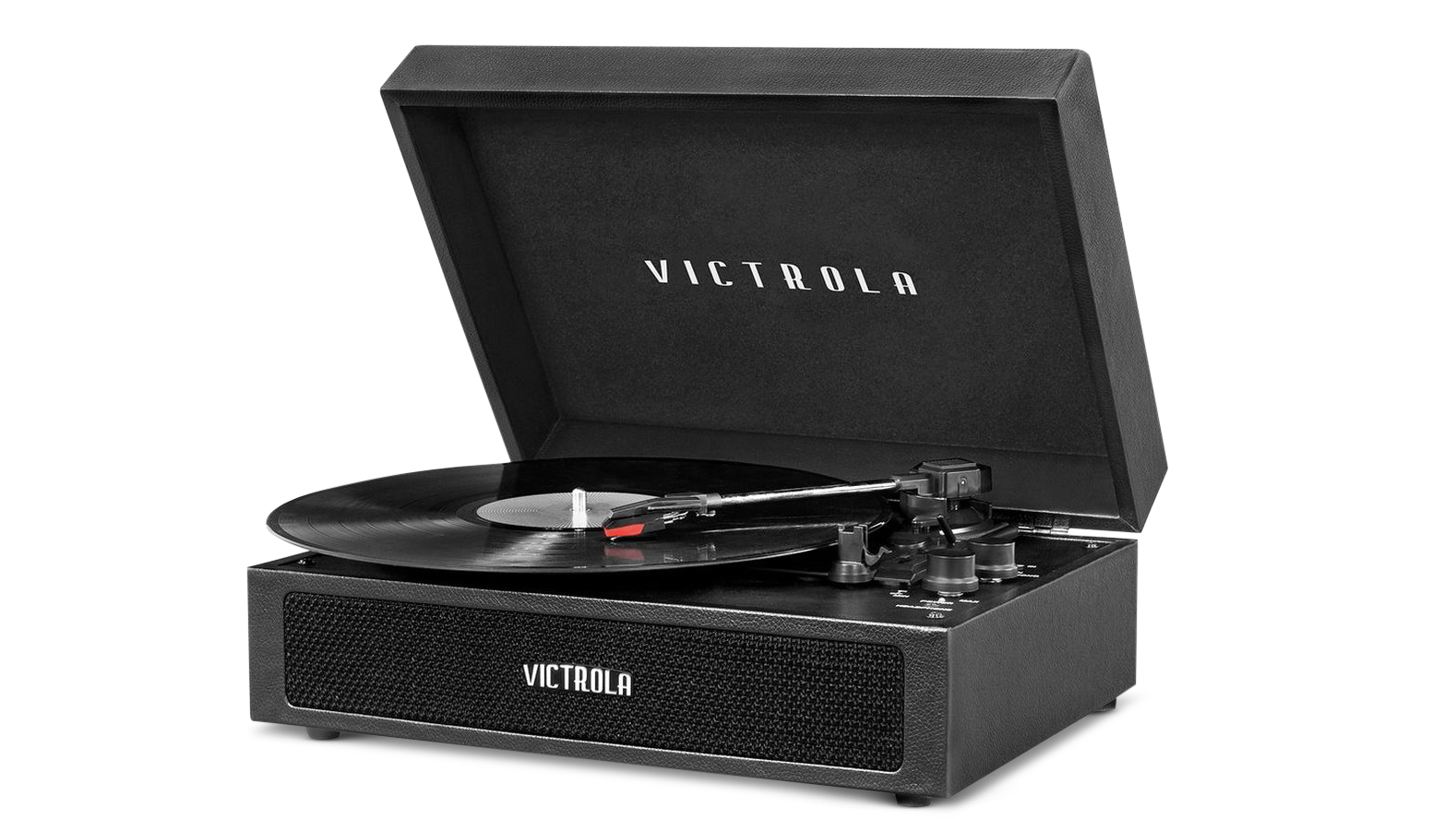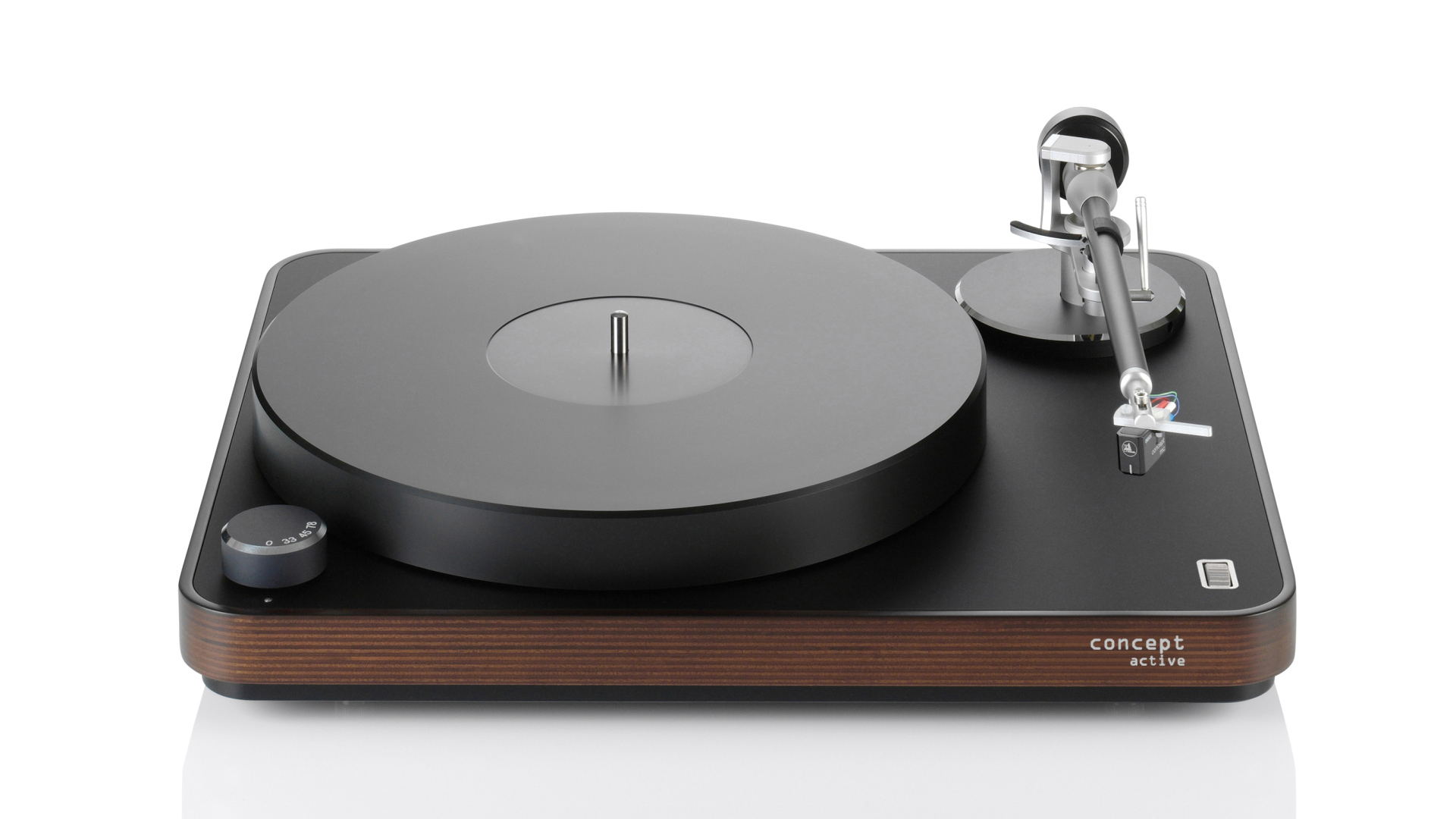I don't think vinyl should be easy – and that's the problem with all-in-one turntables
Sorry, but optimal vinyl playback is inherently a pain

In a world athirst for convenience, the vinyl revival has proven there’s still tolerance for innately finicky, tactile and methodical technology. Either that or it’s part of a yearning for the ‘good ol’ days’ that has simply had more luck than the cassette and personal CD players and stuck… and snowballed. We certainly like to think it’s a bit of both.
Turntables are of course finicky, tactile and methodical by nature. Carefully lifting a tonearm out of its cradle and pulling a record from its tightly fitting sleeve requires far more care and involvement than stabbing at a phone screen without looking or asking Alexa to play Dark Side of the Moon for the ninth time that day. So it’s not surprising that both established turntable brands and new firms wanting in on the resurgence have come up with clever ways to dilute the complexity and intimidating nature of vinyl playback.
We’ve seen a rise in the simpler-to-use deck – those with plug ‘n’ play set ups, perhaps also with automatic stop/start operation. Modern technology that wasn’t around in the record player’s original heyday have become part of the package, too: Bluetooth is increasingly onboard primarily to allow owners to stream their vinyl to wireless headphones or speakers (but sometimes to accept Bluetooth streams from a phone, if the turntable unit also has a suitably-equipped amplifier built-in), and USB outputs facilitate the digitisation of spinning vinyl albums. The likes of Victrola, Crosley and Lenco have famously committed to the all-in-one turntable system by packaging everything – including speakers – into one-box (sometimes suitcase-style, sometimes portable) propositions for as stress-free and hipstery a vinyl system as you could possibly imagine. Even Rega, who has long been championed for its purist, mostly phono-stage-less turntables, has begun offering an all-you-need vinyl system (albeit one made of separates), while veteran Pro-ject is now venturing into making an entry-level, automatic range to maximise appeal for an audience who very reasonably desires simplicity.
These may all sound like compromised offerings to get beginners to vinyl more easily and comfortably into the hobby – and predominantly, they are. Crosley President Keith Starr rightfully praises how “all-in-one units are great for users looking for a simple and easy way to dive right into listening to vinyl, whether it’s someone just starting their vinyl journey or someone looking to revisit old records they recently found”. Victrola also recognises the practical pitfalls of traditional turntable designs that the new wave of all-in-ones overcome: “[people] can’t necessarily afford a full hi-fi system and perhaps don’t have the space but want to start their journey into records and all the fun that comes with that. Changing a cartridge is not so easy for them either.”
But the modernisation and simplification of the turntable user experience have not been exclusive to the lower end of the market in recent years. Cambridge Audio’s Alva TT 2 is a £1700 deck with aptX HD Bluetooth, while the Clearaudio Concept Active MM (below) is a high-end, plug ‘n’ play turntable with a phono preamp and headphone output that strays from the purist offering that often and traditionally occupies the four-figure domain. Why shouldn’t convenience and exceptional hi-fi sound quality go hand in hand just as well? Unfortunately, by the product’s very nature, the best and highest-performing turntable designs will be stripped-back, bare-featured ones.

Compromised sound quality
Both Crosley and Victrola have systems that are several hundred pounds (/dollars), for those ready to take their vinyl experience to the next level over their catalogue’s cruder models. But as Starr notes, while these systems strive to strike a balance of quality, design and affordability, “there’s certainly only so much you can do within a particular unit size and price point”. And that’s rung true in our experience of such designs. Whether these all-in-one products cost around one hundred bucks or three times that, you should reasonably only expect so much sound quality (and we use ‘quality’ lightly) from something designed to deliver across multiple fronts. In the past we’ve found that such designs can also be flawed by, for example, having overly heavy tracking forces (that will ultimately ruin your records). That's not to say they all are, of course, but it isn't wholly surprising considering the nature of the task.
By nature, record players are temperamental beasts that require solid supports and are highly sensitive to vibrations – that, to be the best performers they can be, aren’t conducive to box-like structures with the cheap components necessary to be able to make them affordably and sell them at an accessible price. In our minds, the calibre of turntable that warrants playing new vinyl albums costs a fair bit more, we're afraid. Perhaps it doesn’t matter so much if you’re only buying old second-hand records, but if you care enough about vinyl to spend £30 a pop on new albums, you deserve to hear them in their full glory.
Get the What Hi-Fi? Newsletter
The latest hi-fi, home cinema and tech news, reviews, buying advice and deals, direct to your inbox.
It might be an obvious thing to point out, but every feature superfluous to turntable playback costs the manufacturer (and thus the consumer), and that is therefore expenditure that isn’t being put into the components, materials and engineering that directly affect the fundamental vinyl-spinning performance. Will the best turntable with Bluetooth perform as well sonically as the best similar-priced deck that doesn’t have it? No – and it shouldn't, as part of the RRP reflects the price of the built-in Bluetooth transmitter and perhaps even extra design elements (such as electronic interference prevention) to accommodate it. In a feature-less deck, sound quality is first and foremost. This isn’t only the case with turntables, mind, but consumer electronics in general.
Diluting the charm
Turntables that can spin vinyl and either send it over Bluetooth or accept music over it can be seen as best-of-both-world, logical old-meets-new solutions. But in digitising vinyl that way, you’re sacrificing one of the biggest appeals of vinyl – its analogue sound! The analogue-ness is always going to be a little lost through the digitisation and wireless transmission process. Similarly, when it comes to ripping records as digital files, it isn’t quite the fuss-free, hands-off experience of ripping CDs. It happens in real-time and to get the best possible recording you need to ensure both the turntable and record is in optimum condition.
While automatic designs are simpler to operate and mostly eradicate human involvement (and error!), too, pushing a button and watching a tonearm spring into life isn’t exactly in line with the fun, tactile, hands-on experience that has undoubtedly contributed to vinyl’s charm. Modern features and aesthetically interesting and space-efficient designs may make vinyl playback accessible to audiences that cannot accommodate purist alternatives, but they often compromise the true turntable experience that, to many, makes them attractive in the first place.
We’re sorry, but turntables are inherently a pain – and to be the best they can be, they always should be.
MORE:
How to digitise your vinyl collection
How to get the best sound from your turntable
15 of the best turntable accessories for better vinyl sound
Take your CDs and vinyl for a spin with this superb hi-fi system
Becky is the managing editor of What Hi-Fi? and, since her recent move to Melbourne, also the editor of the brand's sister magazines Down Under – Australian Hi-Fi and Audio Esoterica. During her 11+ years in the hi-fi industry, she has reviewed all manner of audio gear, from budget amplifiers to high-end speakers, and particularly specialises in headphones and head-fi devices. In her spare time, Becky can often be found running, watching Liverpool FC and horror movies, and hunting for gluten-free cake.

